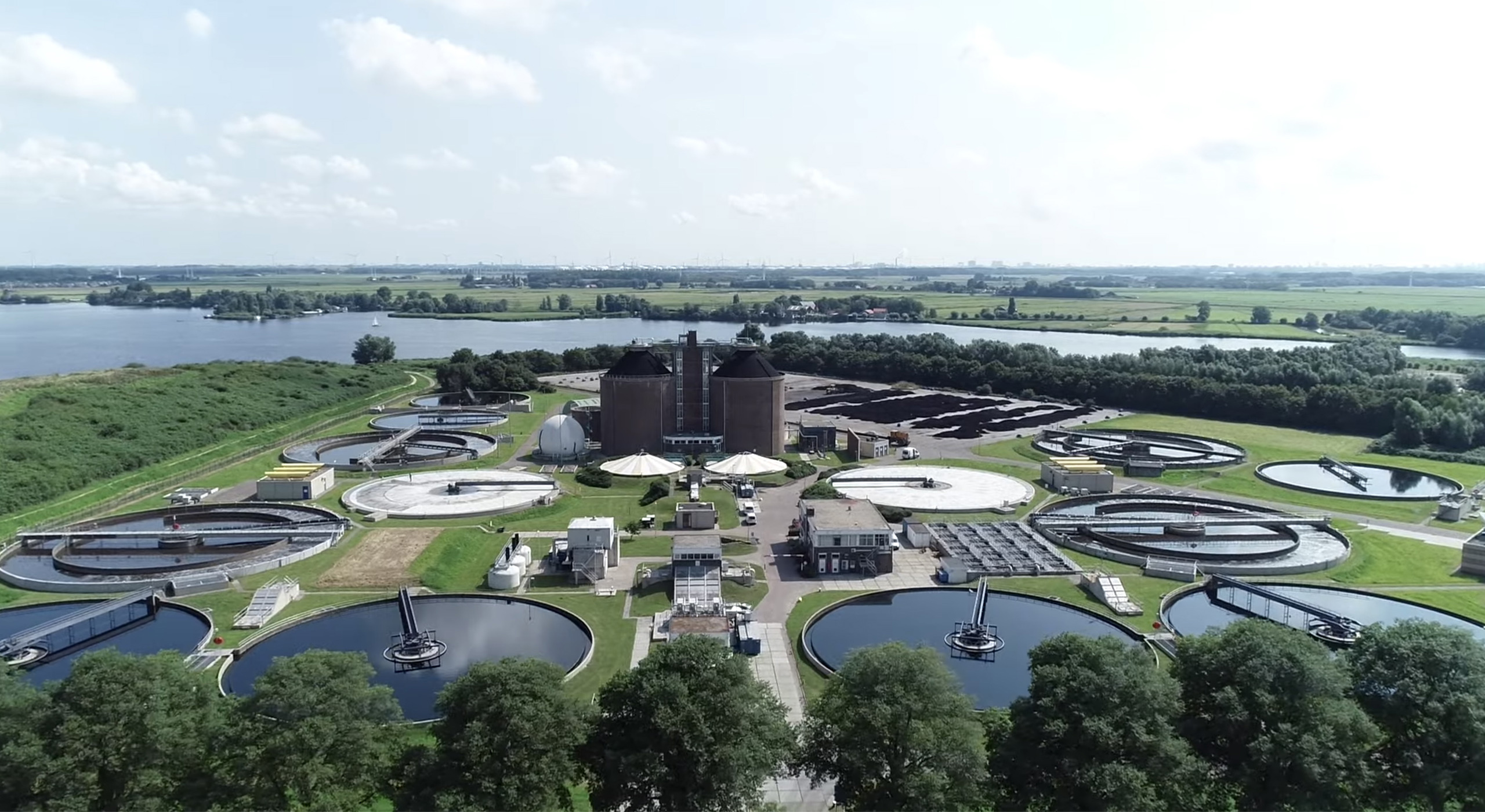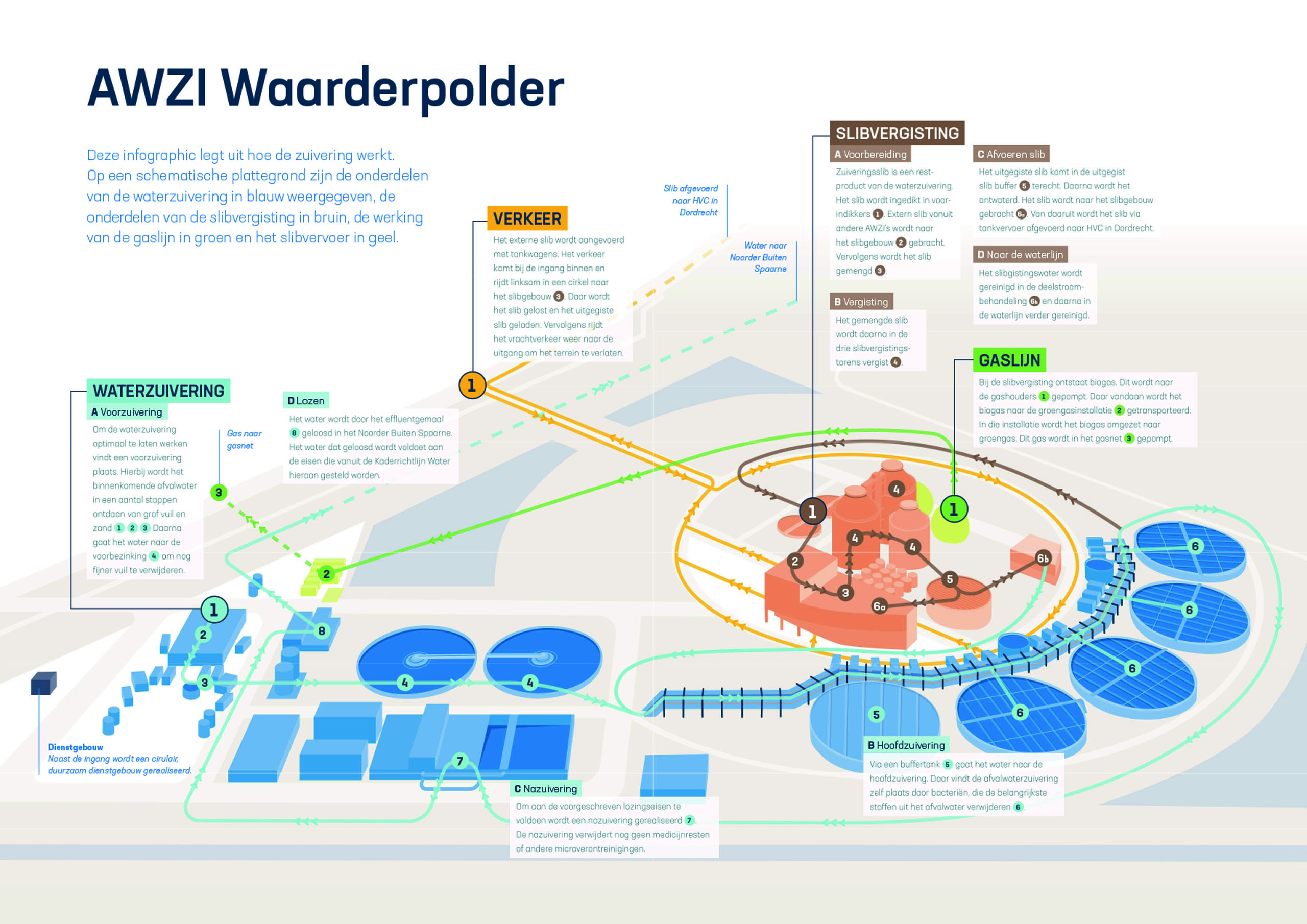Reinforcement of the monumental character
Of the current treatment plant only the sediment treatment towers from the 1960s will remain. This monumental and symmetrical complex was recently renovated and is fit for use again. The unique solid cylindrical brick architecture renders the treatment plant a distinct architectural quality. It is the inspiration for the new Master Plan. The symmetry returns, but now with more respect for the environment, flora and fauna.



Structure of the grounds

The integral quality framework
The art of a good quality framework for purification lies in an optimal balance between solidity and flexibility. Given the utilitarian nature of the complex, flexibility in architectural forms and layout should be allowed. However, at the same time, it is crucial to maintain a well-coordinated master plan that HHR can work with in the long term. A plan that ensures all investments made in the purification process are executed logically and beautifully. For centuries, it has been proven that a well-designed aesthetic has a maximum lifespan and convinces users of the need to protect and improve it whenever possible.
